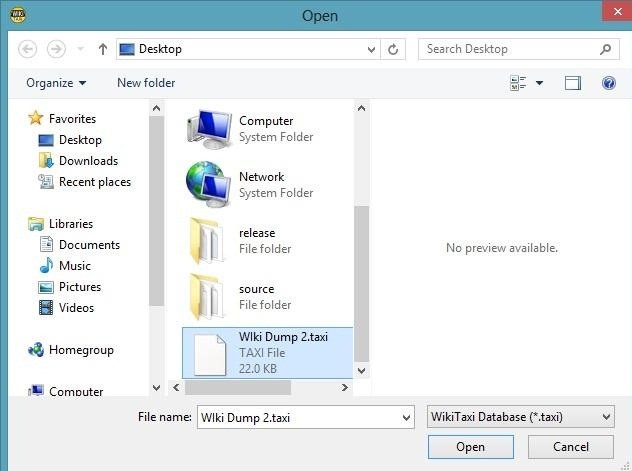

#Torrent file opener wikipedia torrent#
File structureĪ torrent file contains a list of files and integrity metadata about all the pieces, and optionally contains a list of trackers.Ī torrent file is a bencoded dictionary with the following keys (the keys in any bencoded dictionary are lexicographically ordered): They may also continue sharing the pieces, elevating its status to that of seeder rather than ordinary peer. When the client has all the pieces, the BitTorrent client assembles them into a usable form. The client may also report progress to trackers, to help the tracker with its peer recommendations. Then the client connects directly to the peers in order to request pieces and otherwise participate in a swarm. In order to learn the Internet locations of peers which may be sharing pieces, the client connects to the trackers named in the torrent file, and/or achieves a similar result through the use of distributed hash tables. The user then opens that file in a BitTorrent client, which automates the rest of the process. Someone interested in receiving the shared file or folder first obtains the corresponding torrent file, either by directly downloading it, or by using a magnet link. The torrent file acts as the key to initiating downloading of the actual content. As long as all the pieces are available, peers (downloaders and uploaders) can come and go no one peer needs to have all the chunks, or to even stay connected to the swarm in order for distribution to continue among the other peers.Ī small torrent file is created to represent a file or folder to be shared. In this way, the burden on the network is spread among the downloaders, rather than concentrating at a central distribution hub or cluster.
#Torrent file opener wikipedia download#
Once obtained, these pieces are usually immediately made available for download by others in the swarm. Downloading peers achieve high download speeds by requesting multiple pieces from different computers simultaneously in the swarm. The BitTorrent protocol addresses this by decentralizing the distribution, leveraging the ability of people to network " peer-to-peer", among themselves.Įach file to be distributed is divided into small information chunks called pieces. This creates inefficiency when many people want to obtain the same set of files from a single source the source must always be online and must have massive outbound bandwidth. Typically, Internet access is asymmetrical, supporting greater download speeds than upload speeds, limiting the bandwidth of each download, and sometimes enforcing bandwidth caps and periods where systems are not accessible. Other large downloads, such as media files, are often torrented as well. Many free/freeware programs and operating systems, such as the various Linux distributions offer a torrent download option for users seeking the aforementioned benefits. Torrent files themselves and the method of using torrent files have been created to ease the load on central servers, as instead of sending a file to for request, it can crowd-source the bandwidth needed for the file transfer, and reduce the time needed to download large files. Torrent files are normally named with the extension ".torrent". These "peers" allow for downloading of the file in addition to, or in place of, the primary server. With the help of a torrent file, one can download small parts of the original file from computers that have already downloaded it. A torrent file gives addresses identifying computers that can send parts of the requested file. ContentsĪ torrent file acts like a table of contents (index) that allows computers to find information through the use of a Bittorrent client. The term torrent may refer either to the metadata file or to the files downloaded, depending on the context.

A torrent file does not contain the content to be distributed it only contains information about those files, such as their names, folder structure, and sizes obtained via cryptographic hash values for verifying file integrity. In the BitTorrent file distribution system, a torrent file or meta-info file is a computer file that contains metadata about files and folders to be distributed, and usually also a list of the network locations of trackers, which are computers that help participants in the system find each other and form efficient distribution groups called swarms. ( Learn how and when to remove this template message) JSTOR ( December 2018) ( Learn how and when to remove this template message).Unsourced material may be challenged and removed. Please help improve this article by adding citations to reliable sources. This article needs additional citations for verification.


 0 kommentar(er)
0 kommentar(er)
